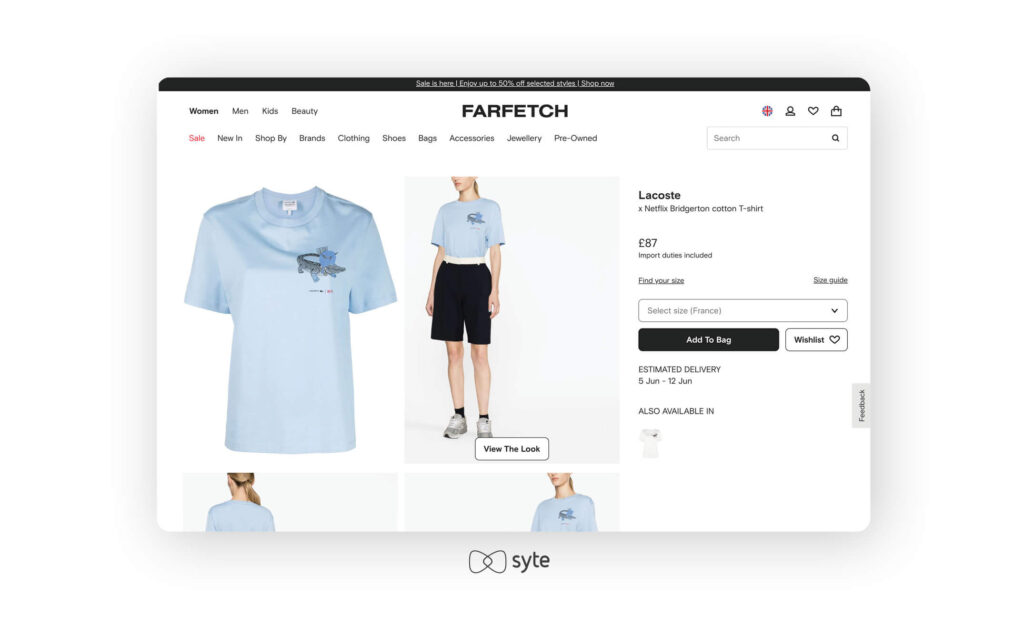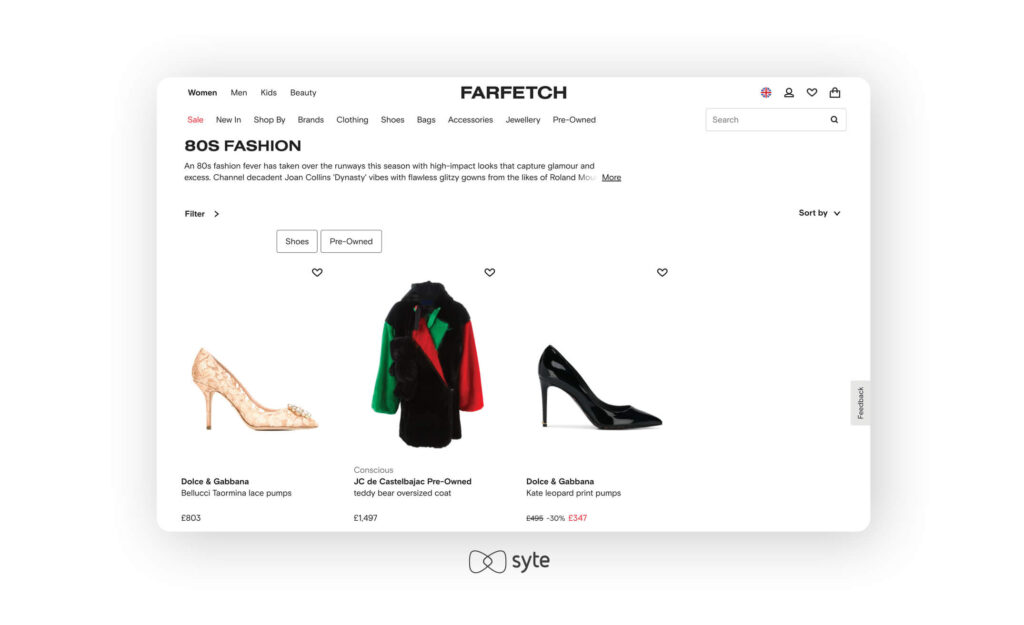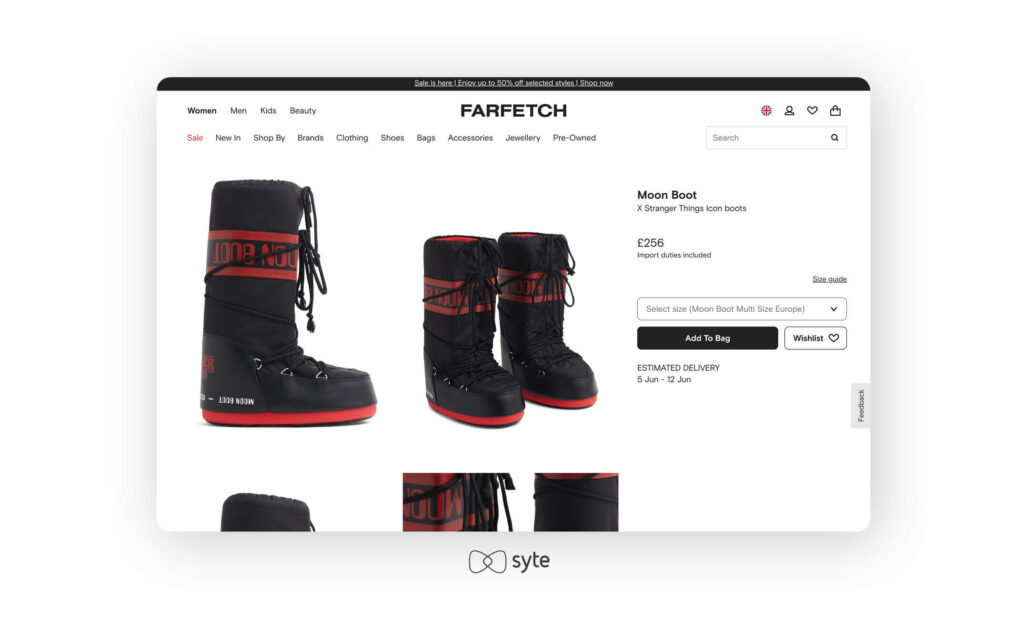Pop culture and retail have been intertwined since time immemorial, and when a famous musician or an actor from a hit show is seen in a particular style, it can quickly become a sensation. Take Tanya McQuoid’s pink Valentino bag as seen on The White Lotus, the Calvin Klein pieces modeled by Jennie from the K-Pop group BLACKPINK, and the playful makeover of Lacoste’s iconic crocodile logo for Bridgerton.

When the account dedicated to the Sex and the City reboot posted photos of Carrie’s Fendi Baguette, Lyst reported a 45% increase in searches for the product within the same month. Similarly, Euphoria and Emily in Paris have also sparked searches for featured items on secondhand sites like Depop and Vestiaire Collective.
There’s also the supernatural series Stranger Things, which was a much-needed respite from the present and blasted viewers into the past with 80s style and memorabilia. The show instantly became a cultural phenomenon, and fans eagerly snapped up tie-in books, video games, and exclusive collaborations with brands like Levi’s.
There are various databases available for identifying products featured in mass media. Websites like FilmGarb and Worn on TV help users find clothing and jewelry items, while Film and Furniture specializes in home decor pieces. Online communities on Reddit such as r/findfashion and r/helpmefind rely on crowdsourcing to identify trendy products. Fashion ID Instagram accounts, such as Gossip Girl Closet and And Just Like That Closet, also have a substantial following.
The rapid pace of trends shared online and across social media has created a very real phenomenon: the fear of missing out. At least 60% of consumers report making purchases within 24 hours because of FOMO. With trends heavily influencing consumer demand, how can brands and retailers ensure shoppers find the exact or similar pop culture-inspired items that caught their eyes?
When buying online, customers want to find what they’re looking for quickly and easily. Unfortunately, this isn’t always the case, and it can be frustrating when items aren’t readily available. Crowdsourcing doesn’t always turn up results, and on-site text search can be unreliable, with up to 70% of searches failing to return relevant results for certain products.

Visual AI takes the lead here by enabling fans to upload a photo or screenshot and identify products in a matter of seconds. This means shoppers can spot an item they want on TV, take a photo, and upload it on an eCommerce site offering visual search technology. Behind the scenes, visual AI analyzes images and visual data to describe, categorize, and group items, so results on the front end turn up with ease for shoppers.
Why Visual AI Is a Necessity
Helps Customers Nail Down Their Favorite Looks
Visual AI can understand customer preferences and pick out the perfect products based on their unique tastes. If your customers are searching for looks that echo Princess Diana’s revenge dress, you can help give their outfit an extra oomph through recommendation carousels that suggest complementary items. Tailored shopping pays off, and retailers who prioritize personalization generate 40% more revenue.
Hones In on the Fine Details
Visual AI captures similarities in the tiniest details and can be even sharper than the human eye. Shoppers can easily find a corset, but can they track one down with a boned bodice, hook and eye fastening, and a scoop neck? By connecting shoppers with exactly what they’re looking for and providing the most accurate and detailed product information, brands and retailers can equip customers with the best decision-making tools.
This helps minimize returns, which amounted to $817 billion in 2022, with a quarter of that attributed to eCommerce purchases. A large part of these returns is due to unmet and mismatched expectations, which visual AI can mitigate along with other technologies like 360-degree videos, superzoom, and virtual reality (VR).

Drives Brand Awareness and Loyalty
In online retail, word spreads fast, and consumers report preferring culturally relevant brands. In 2023, Gen Z is ushering in a return of the goth look with corsets, platform boots, and moody, dark colors made popular by hit TV shows such as Netflix’s Wednesday. If one fan can find a similar product from Wednesday on your site, they are likely to share it with others who are also interested, which helps build a loyal band of customers.
AI-based tags extract and assign information based on image data and make it easier to curate themed collections like “Goth Core” and surface products that fit customer criteria. Leveraging updated, relevant, and rich product tags allows you to ride the zeitgeist, and that matters to pop culture-conscious shoppers.
Shapes Retailers’ Product Strategy
Visual AI generates a wealth of information and trends that empower brands to make data-driven decisions for merchandising and demand forecasting. And when you know what shoppers want, you can manage your product development and inventory with a high degree of accuracy. If the Gap x Barbie collection turns out to be a top performer ahead of the Barbie movie launch, both brands can forecast merchandising assortments and consumer demand ahead of time for upcoming product collaborations and launches.
Pop culture powers retail by inspiring viewers to shop for products featured in media for themselves. The internet has made it easier to find communities with similar interests, although shoppers still encounter roadblocks along the way. Visual AI steps in as a way for customers to stay on top of cultural conversations and for retailers to build product discovery and buying experiences that match what trendy shoppers are looking for. It also creates buying journeys that are as memorable and engaging as the TV shows, music, and movies that customers consume.